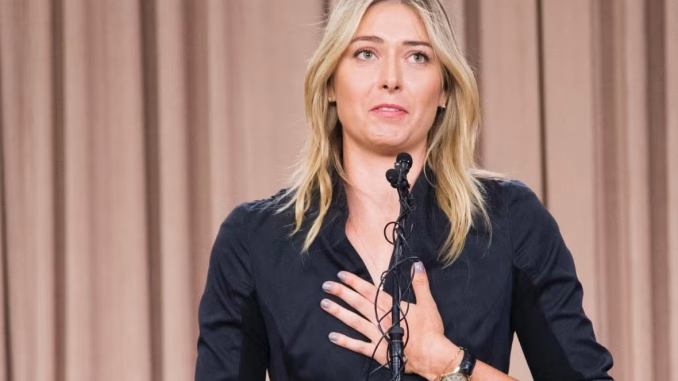
the story behind Maria Sharapova suspension
**Maria Sharapova’s Suspension: A Detailed Look at the Controversy**
In March 2016, Maria Sharapova, one of the most prominent figures in women’s tennis, announced that she had failed a drug test at the Australian Open earlier that year. The news sent shockwaves through the sports world, as the five-time Grand Slam champion revealed she had tested positive for meldonium, a substance that had been added to the World Anti-Doping Agency’s (WADA) banned list just a few months prior, on January 1, 2016.
Sharapova, who had long been an icon in the sport, admitted to taking the medication for medical reasons, claiming it was prescribed for her ongoing health issues, including a family history of diabetes and a magnesium deficiency. The Russian tennis star stated that she had been taking meldonium since 2006, prior to it being banned, and insisted she was unaware of the change in its status. In her press conference, Sharapova expressed regret for the situation, stating, “I take full responsibility for my mistake.”
The fallout from the announcement was immediate and severe. The International Tennis Integrity Agency (ITIA) initiated an investigation, leading to Sharapova being provisionally suspended from competition. The case garnered widespread media attention, with opinions divided among fans, fellow athletes, and experts. Some saw her as a victim of a complicated regulatory system, while others viewed her actions as a breach of trust in a sport striving for integrity.
In June 2016, following a lengthy investigation and hearing, the Court of Arbitration for Sport (CAS) announced a two-year suspension for Sharapova, backdated to January 2016. The decision was met with mixed reactions. While some applauded the CAS for maintaining strict anti-doping policies, others criticized the ruling, arguing that Sharapova’s lack of knowledge about the ban should have been taken into consideration.
The suspension not only affected Sharapova’s ranking and her ability to compete but also had financial implications. As one of the highest-earning female athletes in the world, her absence from the tour meant a significant loss of sponsorship deals and prize money. Major brands began to reassess their partnerships, though many continued to support her during the ordeal, citing her past achievements and contributions to the sport.
In April 2017, after serving her suspension, Sharapova returned to competitive tennis at the Porsche Grand Prix in Stuttgart. The welcome she received was mixed; while many fans celebrated her comeback, others expressed skepticism about her integrity. Sharapova struggled to regain her previous form, facing a series of injuries and inconsistent performances.
Sharapova’s suspension ignited a broader conversation about doping in sports, the effectiveness of WADA regulations, and the responsibilities of athletes to stay informed about the substances they consume. It also highlighted the potential pitfalls of high-pressure sports environments, where athletes may feel compelled to take risks with their health and performance.
In the years following her return, Sharapova transitioned into a business role, launching her own line of sugar-free candy, and eventually retiring from professional tennis in February 2020. The shadow of her suspension, however, lingered, reminding the sports community of the complexities surrounding drug use and the importance of vigilance in maintaining fair play. As one of the sport’s most prominent figures, Sharapova’s story remains a cautionary tale and a critical chapter in the ongoing fight against doping in athletics.
Leave a Reply